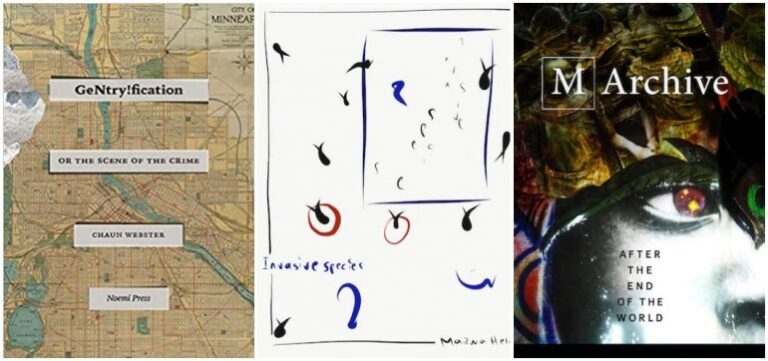Death and Remembrance in Hamnet
“Remember me”—the final line of Maggie O’Farrell’s critically acclaimed 2020 novel Hamnet forms a haunting imperative. Pulled directly from Shakespeare’s Hamlet, the novel’s literary antecedent, these lines are spoken by Shakespeare himself as he acts the part of the ghost of Hamlet’s father. In the play it’s a command that torments Hamlet, serving as instructions that he remember his father and his own overwhelming grief, and that he seek revenge; it’s the moment out of which the spooling lines of the play spiral out as Hamlet struggles with the memory and how best to act on it. In the novel, it’s a summation of the great weight Agnes Shakespeare (née Hathaway), her husband William, and her two daughters have been struggling to live with after the sudden death of her son, Hamnet. Coming as it does at the novel’s conclusion, the imperative is less commanding. The challenge is not remembering—as Agnes tells her husband she has never forgotten—but living with that remembrance.
The center of Hamnet is, as the title suggests, Hamnet’s death at age 11 in 1596, an event that exists in the historical record but about which we know very little. O’Farrell writes that the impetus for the novel (subtitled “A Novel of the Plague”) is the absence of references to the Plague, also known as “the Pestilence,” in Shakespeare’s writing. From that absence, O’Farrell connects a series of events: Hamnet’s death, the plague outbreak of 1596, and the first known performance of Hamlet four years later.
Pointedly, however, the novel focuses not on Shakespeare’s grief (Shakespeare is never named in the novel), but on Agnes. O’Farrell takes the few known facts of her life—that she was older than her husband by close to a decade, that she lived apart from him in Stratford for most of their lives, that he left her his second-best bed in his will—and creates a picture of an independent woman—a woman strongly implied to be magic and perhaps even related to folk figures like the Fae or the Wild Man. She has her own griefs and losses, and the novel traces her remembrances—shuttling artfully back-and-forth between her past, present, and future—and the ways that she grapples with how to practice and live with remembrance in the wake of the loss of her son.
How to practice grief—with what rituals and in what ways—was a critical and contested conversation in sixteenth-century Europe. One of my favorite readings of Hamlet is that it’s a play about what happens in a culture when the rituals of mourning collapse. Set in the shadow of the Protestant Reformation, Hamlet himself is just returned from his education at Wittenberg, where Martin Luther posted his 95 Theses on the cathedral door in 1517. The exact nature of the Reformation and its impact differed depending on time and space, but at its core it sought to redo (or fully undo) many of the practices of the medieval Christian church: ritualized prayers for the dead, belief in Purgatory, elaborate funeral masses. Countless amounts of ink have been spilled trying to discern if Shakespeare or his family were secret Catholics, practicing the old rites and sacraments of the church decades after they had been banned. Hamlet’s existential musings about what comes after death—“To sleep: perchance to dream”—contain the echoes of theological debates about what happens to souls after death. Do they sleep only to be awakened at the Resurrection (as Martin Luther believed)? Might a person offer earnest prayers for a loved one so that they might move from the in-between state of Purgatory into Heaven? The ghost complicates matters exponentially. (No soul resting peacefully in heaven should be able to return to haunt the living, and in a Wittenberg theology should ghosts even exists?) But the play sees Hamlet struggling with his grief from the start. Asked by his mother why it seems that he grieves so much—and so much more particularly than others—Hamlet responds:
Seems, madam! nay it is; I know not “seems.”
‘Tis not alone my inky cloak, good mother,
Nor customary suits of solemn black,
Nor windy suspiration of forced breath,
No, nor the fruitful river in the eye,
Nor the dejected ‘havior of the visage,
Together with all forms, moods, shapes of grief,
That can denote me truly: these indeed seem,
For they are actions that a man might play:
But I have that within which passeth show;
These but the trappings and the suits of woe.
He mourns his father long after everyone around him seems to have forgotten, leaving behind not only the ritual habits of honoring the dead but also mourning itself. His public grief is treated as out of step, untimely. That’s the irony of the ghost’s command: “Remember me.” Hamlet has never forgotten. It’s the practice of that remembrance—what the ghost wants from him, what his mother wants, what he himself wants—that’s contested.
Hamnet approaches the challenge of grief and remembrance from another angle, as we watch Agnes’s way of life, her rituals and rites, clash with the world around her. The painful reality of the novel is to be walked through Agnes’s (and Hamnet and his father’s) memories as the novel moves inexorably toward loss. Agnes reflects on her son’s death, calling the first intimation of his absence her life’s “epicentre, from which everything flows out, to which everything returns,” and the novel follows her reflection down many flowlines: Hamnet and his twin sister Judith’s birth, meeting Hamnet’s father, the morning of her son’s death. And we watch her remember as she practices mourning rituals, taking a lock of Hamnet’s hair and storing it over her mantle, refusing to move his clothing, constantly watching and listening for his footsteps, experiencing the everyday awareness of his absence. This level of grief, like Hamlet’s, is often uncomfortable for those around her. Agnes’s mother-in-law, who has buried three children, sees it as over-extending its time, and her husband flees to London partially to escape her overwhelming, every day grief.
Death is transformative. “The Owl was a baker’s daughter. Lord, we know what we are, but we know not what we may be,” rambles Ophelia in the madness that follows her father’s death in Hamlet. The transformation in death that the play Hamlet is famous for—encapsulated in Hamlet’s “Alas, poor Yorick!” graveyard speech—is what happens to a person’s body and soul after death. The rot and absence that comes to occupy the space where life was. But the vagueness of Ophelia’s lines point not just to the way death transforms the dead, but how it transforms the living. We, the living, know not what we may be. As the epicenter of Agnes’s life, in the final hundred page, we watch Agnes’s remembrance and grief transform her relationship with her husband, her understanding of herself and what she can know, even in how she occupies space.
This transformation can itself seem a tragedy. In the first year after her son’s death, Agnes reflects that she “is not the person she used to be. She is fundamentally changed.” These changes include being undone by small problems like overboiling soup and (temporarily) suspending her healing practice. But the novel also shows the painful reality that transformation and remembrance go hand and hand. This isn’t comforting—how can it be?—but to remember, to practice remembrance daily, shapes a person. To do as the ghost, as Shakespeare, commands—to remember—is to allow oneself to be transformed.


